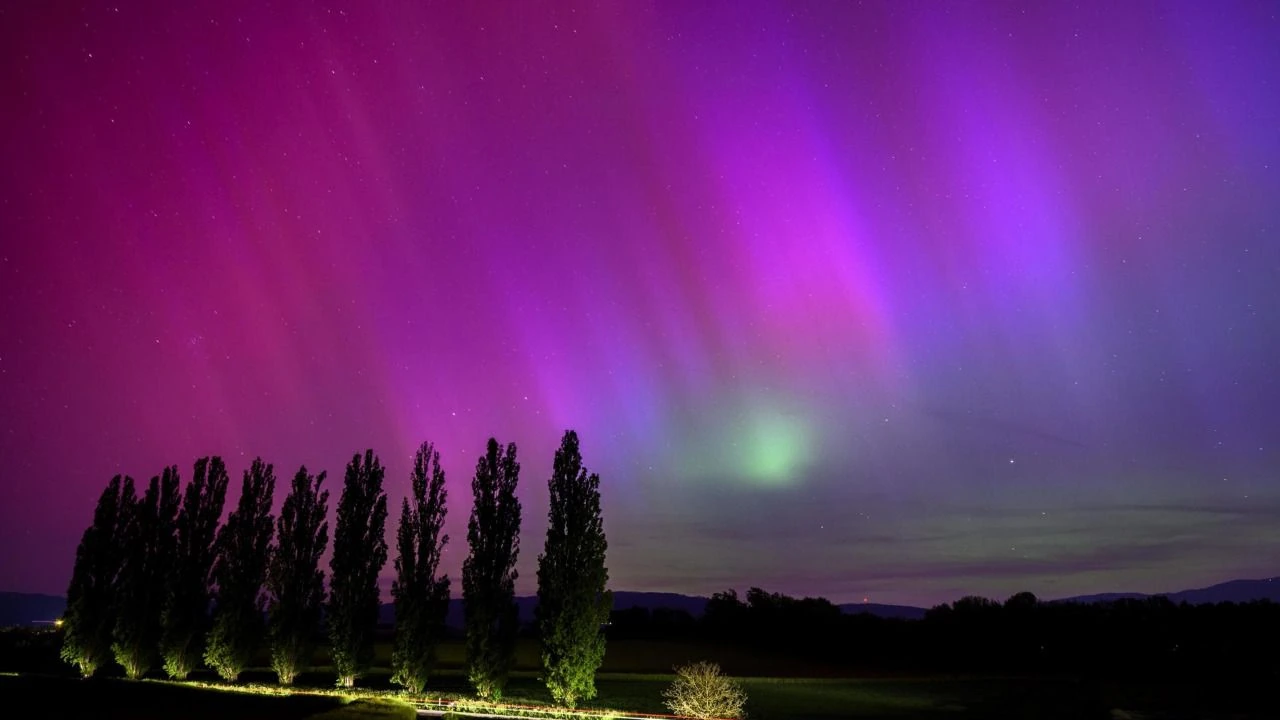
Florida Gets an Unforgettable Night Sky Surprise
On a recent night, something extraordinary happened over Florida—an aurora borealis display lit up the skies in shades of pink, purple, and green. For a state better known for its sunsets and tropical storms, the sight was baffling. Yet it was real.
A powerful G5 geomagnetic storm had struck Earth, pushing the Northern Lights far beyond their usual range. For many Floridians, it was a once-in-a-lifetime moment. Here’s how it happened, why it matters, and whether it might happen again.
What Is a G5 Geomagnetic Storm?
Geomagnetic storms occur when solar activity—like solar flares or coronal mass ejections (CMEs)—disturbs Earth’s magnetic field. They’re rated on a scale from G1 (minor) to G5 (extreme). A G5 event is the most severe, with the power to affect satellites, power grids, and even high-frequency radio signals.
These storms happen when the Sun hurls massive clouds of charged particles into space. If those particles reach Earth and strike the magnetosphere with enough force, the impact compresses and distorts our planet’s magnetic field. When that happens, the auroral oval—the region where the Northern Lights are visible—can stretch far beyond the poles.
Historically, G5 storms are rare. The most famous, the 1859 Carrington Event, disrupted telegraph systems across the globe. While this recent storm didn’t cause major damage, it did offer an unforgettable display—and a subtle reminder of the Sun’s power.
How the Northern Lights Reached Florida
Auroras typically appear near the Arctic or Antarctic Circles—think Norway, Alaska, or northern Canada. So how did they end up in the skies over Florida?
The sheer strength of this solar storm pushed the auroral oval much farther south than usual. As the charged particles collided with atoms in Earth’s atmosphere, the resulting energy release caused brilliant flashes of color, visible as far south as Texas and Florida.
In Florida, the lights were most visible in low-light, rural areas. Residents in places like Gainesville, Tallahassee, and Jacksonville reported faint glows just above the northern horizon. A particularly striking photo from near Ocala showed green streaks shimmering across the sky. It quickly went viral.
Beyond the Beauty: Real-World Impacts
While the sky show stole the spotlight, the storm had more than just visual effects. The U.S. Space Weather Prediction Center issued alerts to grid operators, warning of potential electrical disturbances. Minor voltage fluctuations were reported in a few regions, though no major blackouts occurred.
Satellite operators also took precautions to protect sensitive instruments. Some GPS users may have experienced temporary positioning errors. High-altitude flights—especially those on polar routes—were monitored closely due to increased radiation exposure.
Behind the scenes, while people marveled at the lights, teams across several industries were quietly ensuring systems remained stable.
Could It Happen Again?
Possibly—especially in the near future.
The Sun operates on an 11-year cycle of activity. We’re currently heading into the peak of Solar Cycle 25, which is expected to bring more frequent and stronger solar storms. That raises the odds of seeing auroras farther south than usual.
While it’s unlikely Florida will become a regular aurora destination, northern U.S. states may see more frequent displays over the next couple of years. For skywatchers across the country, now is a good time to start paying attention to space weather forecasts.
How to Catch the Next Aurora
If you missed this event, here’s how to prepare for the next opportunity:
- Follow Space Weather Alerts: Check sources like NOAA’s Space Weather Prediction Center or use apps like My Aurora Forecast. Watch the Kp index—anything above 7 means auroras could be visible much farther south than usual.
- Seek Dark Skies: Light pollution can make auroras hard to see. Drive away from city lights and find a spot with a clear view of the northern horizon.
- Use a Camera: Even when the aurora isn’t visible to the naked eye, long-exposure photography can capture stunning colors. Try using your smartphone’s Night Mode or a DSLR with a tripod for best results.
- Watch at the Right Time: Auroras tend to peak between 10 p.m. and 2 a.m., though exact timing can vary. If a major storm is predicted, keep checking throughout the night.
Final Thoughts
The recent G5 geomagnetic storm gave Florida—and much of the U.S.—a glimpse of something usually reserved for the far north. It wasn’t just a colorful spectacle. It was a reminder of the Sun’s influence on our planet and how space weather can shape life here on Earth.
Whether you saw the display or missed it, the message is clear: keep looking up. We’re entering a period of heightened solar activity, and more surprises may be on the horizon.
If you captured photos or videos, share them. And if not, consider setting up alerts or simply taking a moment each evening to scan the skies. As this event proved, sometimes the universe delivers awe-inspiring beauty—right in your own backyard.




Leave a Reply